
On Metaphor


Rooster Cogburn: I have prior business. Mattie Ross: You have been at it for quite some time, Mr. Cogburn. Rooster Cogburn: There is no clock on my business! True Grit (2010)
So fancy !

A broad-ranging set of information design and historical imagery in the CA Water Atlas. The full document can be viewed in high-resolution at Archive.org.
The image below enlarges with click.

Timelines, Sequences, Maps—simultaneous and beautiful. The complete atlas is at the David Rumsey Historical Map Collection and is well worth a studied look. Details! Also, take a quick read of Steven Heller discussing the Atlas at Print Magazine and An Infographist is Just a Visual Journalist from Swiss Infographics.com

So this morning I chose to enlighten myself with the realization that storyboard artists have a keen ability for directing the viewer to an absolute understanding of what will happen next, specifically for cinematic use. Check out the Famous Frames website for a better look into what I’m talking about.
The site includes over a hundred artists who work in several types of design including animation, concept design for products and cars, storyboarding, packaging, video game design, and music videos. And these I listed because of our class’ interests. I’m very interested in shooting boards for films.


I couldn’t help but immediately think about our instructional assignment as I was “reading” the numerous storyboards I stumbled upon. To read these are to be instructed. And that’s precisely what we want to achieve from our in-class work. We want to instruct our viewer. One of the problems I’ve encountered while working with my set of pliers: I have to forcibly remove my notion that everyone viewing my work already knows how to use my tool. Much like storyboard artists presenting an unfamiliar concept, I’ve made an attempt to convince myself I’m instructing people who aren’t aware of the uses within the popular family of pliers. Has this benefitted me? I’m not exactly sure, but acting like a storyboard artist is fun regardless.
Enjoy the thousands of examples literally awaiting scrutiny.
There are three recent articles at Design Observer that you may find of particular value:
The Millennial Designer
The Four Lessons of Lou Dorfsman
Shaping Design Education at Leap Symposium
From Metropolis Magazine this month is a concise outline for approaching contemporary design (and learning): Notes From the Dean
A few of us have talked about gaming—Edge has some good articles that span far more than tech and FPS. What’s in Store for Videogames in the Coming Two Decades

It is only graphic design or any of its cousins when it is published.
Either requested from a server and distributed to many displays or pulled from a press and shared, it is the original when it is many.
Saved singularly precious in a case under a bed, in a glass box, or pasted and framed in presentation, it is only itself when held or viewed unencumbered in multiple by many. The copy is the only original.
Make multiples!
Trade for the full set!
 Secret Law of Page Harmony (Retinart.net)
Secret Law of Page Harmony (Retinart.net)
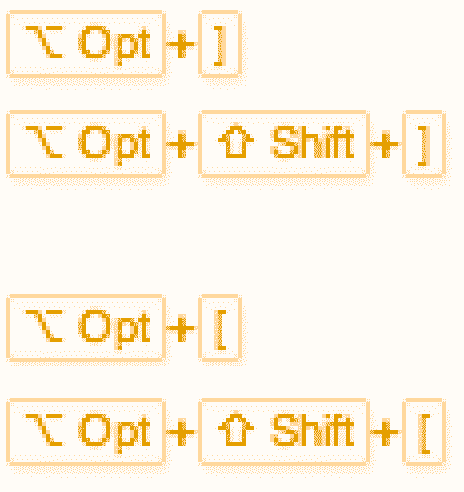
Also, Pentagram is not above poop jokes, and this pleases me.
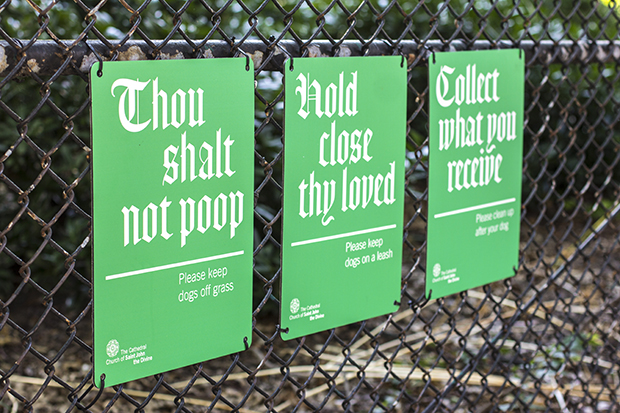


A short interview with Donald Norman was posted at Designers & Books today. His book, The Design of Everyday Things is being released in an updated edition this November. He makes comment on several things including open-source, human-centered design, and current design education. It is well worth a quick read and further look at the references mentioned.
Thanks to all of you who have been posting—it is good to see an online culture develop. Some of you mentioned you were required to blog in the past and added that being required to participate soured it for you. I think (know) there are great benefits to writing, reading, forming online dialog, and just getting in and of both the virtual communities and the systems that make it all possible. It works best when it is improvisational, voluntary, and more akin to knowledge sharing.
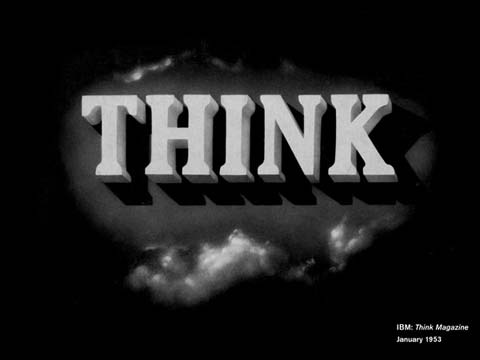 I noticed Design Observer just reposted an article and comment thread from a decade ago: Culture Is Not Always Popular. I recall the conversation, but it seemed surprisingly new. It is new—there are varying degrees of fresh perspective and historical evidence. Yes, that commenter is a troll and has proven such over the years. Yes, this other pair’s intent and inquiry was and continues to be sincere. Time offers these perspectives and surprises. One of the authors is Jessica Helfand—who we watched and discussed a bit in regard to scrapbooking. Blogs work this way too as they allow a record for rediscovery, recollection, and connection to things we may have thought and said but remembered differently. And in some cases forgot altogether.
I noticed Design Observer just reposted an article and comment thread from a decade ago: Culture Is Not Always Popular. I recall the conversation, but it seemed surprisingly new. It is new—there are varying degrees of fresh perspective and historical evidence. Yes, that commenter is a troll and has proven such over the years. Yes, this other pair’s intent and inquiry was and continues to be sincere. Time offers these perspectives and surprises. One of the authors is Jessica Helfand—who we watched and discussed a bit in regard to scrapbooking. Blogs work this way too as they allow a record for rediscovery, recollection, and connection to things we may have thought and said but remembered differently. And in some cases forgot altogether.
Christian Cox, a designer at ETC in New York, posted here last night and this morning we texted at length. He noted how much reading and writing online can change our ideas and encourage us to do one of the best activities that has us sort out what we know and recall where we were when. We also minced about word choice, typos, and appropriate amounts of information for an audience. I am sure I could have done a better job with that where-we-were-when sentence.
“What should young people do with their lives today? Many things, obviously. But the most daring thing is to create stable communities in which the terrible disease of loneliness can be cured.”
―Kurt Vonnegut
“Our identity is fictional, written by parents, relatives, education, society.”
―Genesis P-Orridge
“Communication leads to community, that is, to understanding, intimacy and mutual valuing.”
―Rollo May
In recent years, there has been much talk of participation, community, experiencing, sharing and anything else you can write on a post-it note in regards to hot, new-fangled trends in contemporary graphic design practice that has been assumed all should be a master. I often find myself wondering if those speaking of these hot trends in design have much experience in immersing themselves in the forms they speak. If they spent countless hours in a massively-multi-player-RPG, or even walked around Andy Kaufman/Sasha Baron Cohen style in rank clothing in attempts to convince other human beings (and yourself) that you are another person? I’ve recently thought a lot about this because these are activities I’ve found myself engaging in for a good part of my life.
I recently recovered a memory of something that happened, roughly eight years ago on an Internet message board dedicated to reviewing and sharing thoughts on video games that I was an active member. At the time I was 21 years old, just about to finish my combined computer art and theatre associate degree at a community college in Tennessee and looking forward to enrolling in a BFA program for Graphic Design at the University of Tennessee. I had been a part of this online community (at the time) for almost six years. It was an extremely tight community for a message board about gaming. Looking back, it was more than just sharing thoughts on gaming. We shared political commentary, spiritual discussions, and even important events in each others’ lives. It was very small—maybe 15 or so members. We had our own domain and limited access to registering for the boards to keep out spamming bots. But when someone knew someone that was serious they would be invited to join the discussion. Everyone knew everyone else’s real life persona; or so we thought.
Our group had one particular member that was a rock solid part of the ongoing discussion and who also happened to be female, something that wasn’t as common on gaming message boards at the time. She was well articulated, well informed, and had excellent taste in games, film, and art. We called her Sav. More than likely, many of the young men on the forum develop a virtual infatuation with the idea of Sav, but being a thoughtful community, I think most of all we considered her a friend, a colleague that wanted to write interesting commentary on things that we were involved in. She was a foundation to the community and I had many discussions and talked at length with her about her studies at Berkeley. Hell, she even had photos of herself working on her computer.
Then came the day in which Sav was no longer the Sav we thought she had been. She had sent messages to her dearest online pen-pals to explain to us that she was not a girl who happened to enjoy gaming, but a man who happened to be the boyfriend of the girl who was shown in each picture. Some were shocked, others slightly furious. I myself was quite shocked as I had felt lied to. In reality, Sav was mostly the person she claimed to be. Sir, we’ll call him, did actually study at Berkeley and if I recall correctly, so did his girlfriend. Perhaps part of Sav’s persona was Sir’s girlfriend as well. Maybe it was just a shared persona for the both of them, but Sav did not enjoy being involved in online communities. I still felt betrayed.
Here I was, sharing actual truths about myself with someone who was using another person to create an identity to garner a certain reaction. It felt calculated. To say the least, I was pissed. I wrote a message back saying I understood it as a social experiment with no real malicious intent. Still, I was pissed off. This, along with my starting the BFA program and beginning to drift out of gaming and spending time in chat rooms led me to leaving that particular online community—in my mind never to return.
Yet, seven years later I still found myself thinking on that incident. This week I found myself in a conversation about online communities with a friend who was vary reluctant about what they were doing to destroy people’s actual, physical social lives—a point that is still being thought about and argued at large in society. Naturally, I recalled this specific community and wondered what had happened to it. Like most older forums and websites I assumed it had been taken down. Searching for Sav’s username, though, I found it still existed and in fact people had even posted to it this very week. Searching through, I found people had wondered what happened to me. Some posts asking this question in 2008, others replying in 2010 saying “He is long gone.” Somehow, I recalled my username and password (luckily, I’ve used variations on the same ones for the past 16 years) and found myself taken back through a time warp.
I found that these people were still talking, still in touch with one another. In fact, Sav was even still on there, living as her real self, Sir. He had married his girlfriend (Sav to us) and the two had a 14-month-old baby together. I spoke with one of the other regulars from that time period and he also had related to me that he was at Sir/Sav’s wedding and shared the Sir-posing-as-a-girl-gamer story to their families in which they got a good laugh. All seemed forgiven. Several of the members even met up annual in ‘real life,’ Sir and Sav included. I have to say it delighted me to find such a forgiving, welcoming community. Then again, that was why I was invested in it to begin with. After a long day at the studio, I went home to write these words in one of my first posts to the board in seven years:
On the Importance of Being Here
It’s been a while since I’ve made a thoughtful post on a message board. Well, to be honest, it’s been a while since I’ve posted on any message board at all. Not since I left here. This place was my last true residency on a virtual community. Which is a funny way to describe something that has no physical space. This community has held several Internet spaces over the years and some have even met up in physical spaces, who should be applauded for the continued sense of community. How is it possible that some random people from a corporate message board (I speak of those that flocked here originally from IGN) could end up, a decade and more later, still communicating with each other? I think that speaks volumes to the type of people that inhabited and continue to inhabit this forum. The people here were always what made this community feel special.
It’s what kept me around for seven years and brought me back after another seven years of absence. Though this community has no specific physical location outside of these Internet constructs, there are strikingly vivid memories I retain associated with the people and community here. Just seeing certain screen names again had me recalling a very vivid memory at the age of 16 or 17 of riding to a gas station in TN to get a Cheerwine and a snack after talking at length with Sav (now Sir) about a video game called Rez on the IGN message boards.
Though there have been shocking revelations, minor feuds, and a fair share of drama and argument—the real reason this place felt different than other message boards about games, movies, etc. was the thoughtfulness and sincerity in most discussions. That is something that is hard to find, whether online or off. That’s why I was surprised to find that this forum was still going, but in the back of my mind I wasn’t surprised at all. I was glad. Glad that somehow, people kept it going—because it did mean something. That is all too rare in a format that is constantly changing. So many websites and message boards forgotten, even near impossible to view through the internet archives.
Here we are, inching into a third decade where a large majority of people have had access to chatting, messaging, e-mailing and sharing with people all over the world that they may meet, or never meet in a physical space. It’s something commendable and worth taking note of.
Using this incident is an example of untold millions of experiences I’ve had in which I’ve seen miraculous things bring interested, open people together. Whether it is forgiveness, joy, or simply providing a wider understanding outside of your own limited view—this ability to connect with others should not be taken for granted. How are we spending our time with these tools and how much consideration are we taking in to how transformative they can be?
In studying contemporary design, I believe there should be a broadening in what each individual perceives to be the major influential factors on their practice. It is quite often that design refers to itself and the figureheads of its history as definite developmental points in the furthering of the field, or growing an individual designer. But these things are a given. Of course Rand, Carson, Martens, and others have had influence on any that have bothered to look at and study them. This is not to discredit any of their influence, but the texture and experiences of our own lives when studied in-depth can (we hope) provide even more powerful realizations on why you/we/all started this journey.
Who are we?
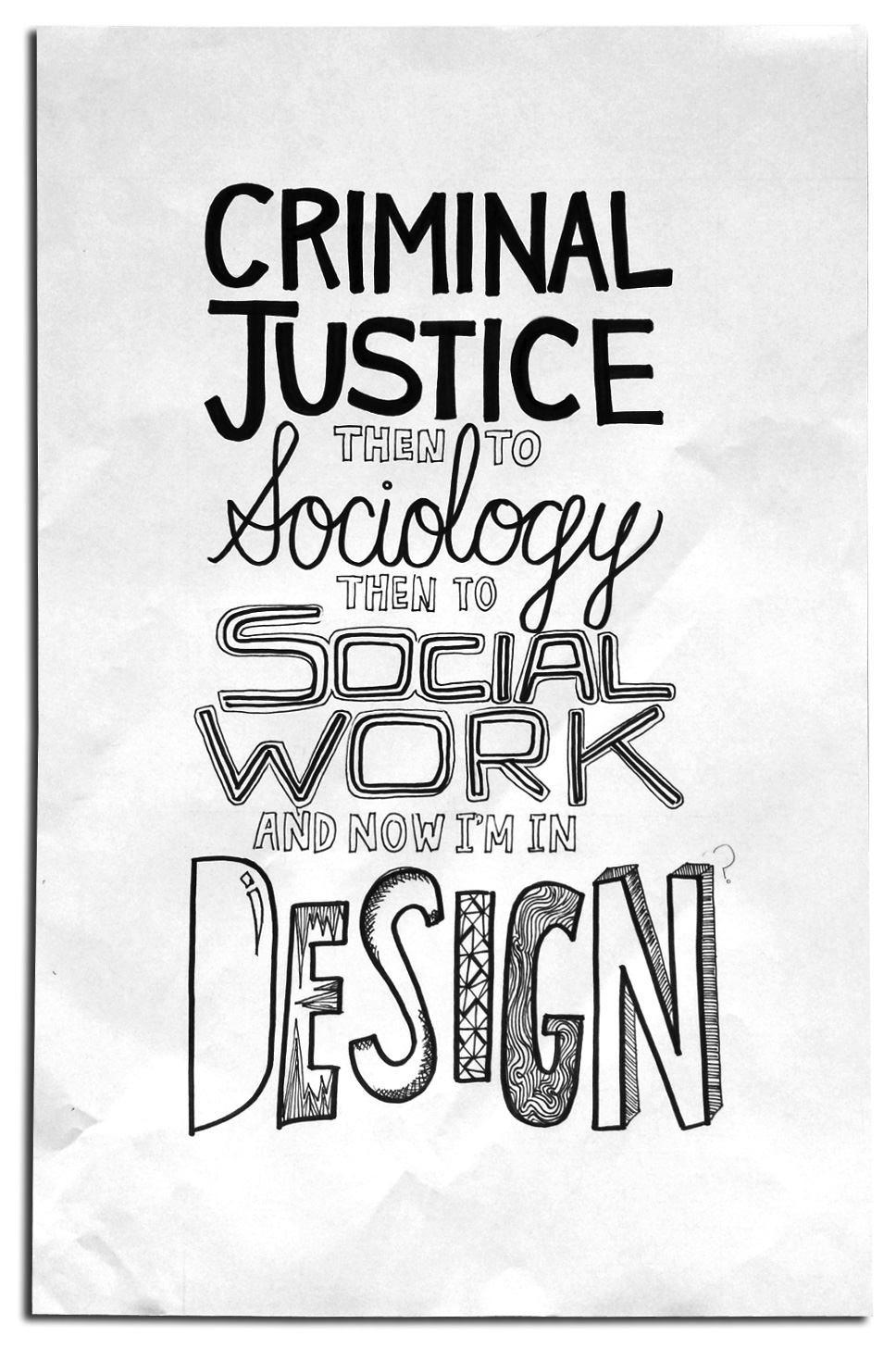
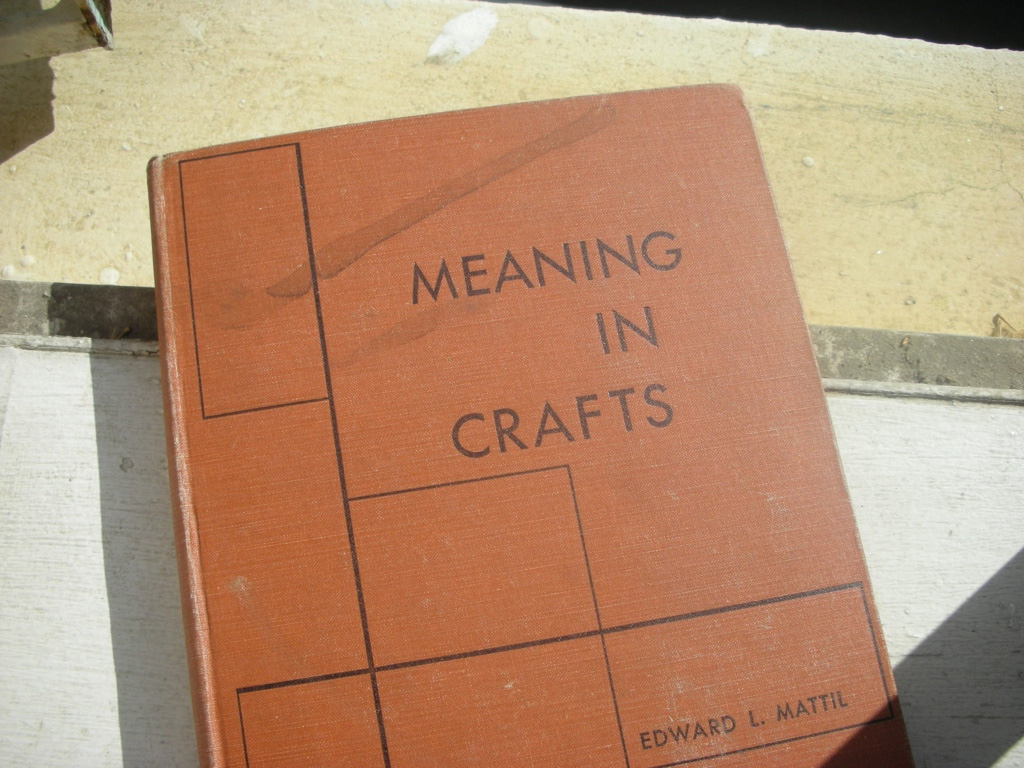

A helpful piece of advice from Tony: No one knows you better than yourself. No one has lived your life. Don’t be afraid to use that.
Last week Joel explored the “I” for his Friday assignment. It was large, it was strong, and it was comprised of feeling. Feeling is something that factors in when I am creating a piece. I decide what general emotion I would like the audience to feel when they see the piece. That specific emotion influences color choice, composition, subject matter, ect.. Joel did something different. He used feelings that HE possessed to create a piece. It was personal. He was not detached from his design. His name was the same size as all the other words.
I realized something last week—I have not done this AT ALL while designing for this class. The personal work I create in this way has been seen by few, if anyone at all. It stays hidden away from the public and has unintentionally created a division in me. There is a difference in my mind.
I felt like there is a time to work this way and there is a time to work in an alternate fashion. It has been so long since I worked this way that I did not even notice I wasn’t doing it anymore. I only knew that, to me, my pieces have been lacking something, and perhaps feeling is it. There have been quite a few students that come in on Friday with pieces that make the class silent. They are drenched in emotion. They are close to the artist’s heart. We need time to ponder them—to analyze them.
I believe the difference in using feeling as a tool to create—to help shape a piece— and creating a piece that depicts a feeling lies in the fact the audience adopts the artist’s emotions as their own. The artist is no longer the person that created the art. The art IS the artist. And the art engages the viewer in a stronger way. This has been seen in our Friday critiques. Joel’s, Darya’s, Sarah’s pieces to name a few. Can you remember the discussion we had about these pieces?
So, maybe there is an appropriate time to approach a design idea this way. Maybe designs and designing feeling don’t have to be two different things. What do you think? How do feelings factor in when you design? What are your opinions on the matter? Is it time to incorporate yourself back into your work?
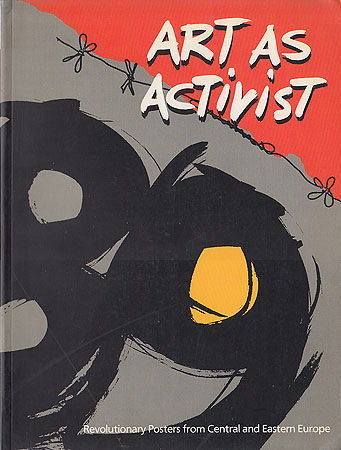 A few of you have talked to me about posters with a social or political message. One of the best books on the subject is Art as Activist which featured many Eastern European poster designers. An exhibit of the work was held at Marshall University a few years after the Berlin Wall came down.
A few of you have talked to me about posters with a social or political message. One of the best books on the subject is Art as Activist which featured many Eastern European poster designers. An exhibit of the work was held at Marshall University a few years after the Berlin Wall came down.
I met a few of the designers but had the honor of Jan Sawka to review my Junior graphic design portfolio. He gave me several hours of his time and the organizers eventually turned the lights off on us. He told me how he was jailed and later banned from returning to Poland because of his message. He shared with me how that all eventually changed and he was welcomed home as a hero. It was quite a story to hear and a radical departure from the motivations that were generally discussed in class at the time—then and now!
you like that, you might dig this:
And check out Luca Barcellona’s wonderful image gallery: Portfolio/Flickr
A post at Fast Co. Design and their site with several prints.

Letterproeftuin’s The Smallest Printing Company
